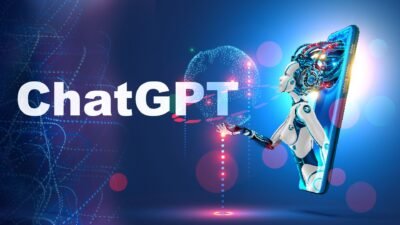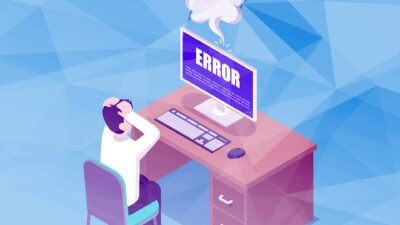How to Develop a Comprehensive Employee Training Program

Employee training plays a pivotal role in driving business success by equipping staff with the necessary skills and knowledge to excel in their roles. A well-designed comprehensive training program goes beyond mere skill development; it fosters a culture of continuous improvement and adaptability within the workforce.
Employees become more proficient in their tasks, leading to increased productivity and higher quality of work. Such programs also nurture employee morale and satisfaction, contributing to reduced turnover rates and a more cohesive team environment.
In this article, we delve into the fundamentals of developing an effective employee training program for your organization. By exploring the key elements and strategies involved, we aim to empower businesses to cultivate a knowledgeable and skilled workforce that drives sustainable success.
Laying the Groundwork
A successful employee training program begins with a thorough needs assessment, a crucial step in understanding the specific knowledge and skill gaps within the organization. Needs assessment involves systematically identifying areas where training is needed to enhance employee performance and align it with organizational objectives. Through surveys, interviews, and skills gaps analysis, companies can gather valuable insights directly from employees and managers, ensuring that training initiatives address real needs and challenges.
Once the needs have been identified, the next step is setting SMART goals. SMART goals are Specific, Measurable, Achievable, Relevant, and Time-Bound. This framework provides a clear roadmap for program development and evaluation. Specific goals define precisely what needs to be achieved, measurable criteria allow progress tracking, achievable goals ensure feasibility, relevant goals align with business objectives, and time-bound goals establish deadlines for completion.
By incorporating SMART goals into the training program, organizations ensure clarity, focus, and effectiveness. Employees understand expectations clearly, and progress can be monitored systematically. In the next section, we will explore how to design the training content and delivery methods to effectively meet these goals, laying a solid foundation for a comprehensive employee training program.
Building Your Program
Developing a robust employee training program requires careful consideration of the target audience, clear learning objectives, appropriate delivery methods, and engaging content.
Target Audience
Identify the specific group of employees for whom the program is designed, such as new hires or specific departments like sales or customer service. Tailoring content based on different experience levels ensures relevance and effectiveness, catering to both entry-level employees needing foundational knowledge and seasoned staff requiring advanced skills enhancement.
Learning Objectives
Learning objectives serve as the cornerstone of program structure by outlining what participants should achieve upon completion. Well-written, SMART objectives provide clear direction and focus. For instance, a sales training objective could be “By the end of the program, participants will demonstrate proficiency in using the new CRM software to increase client retention by 20%.”
Choosing the Right Delivery Method
Consider various delivery methods such as in-person workshops, eLearning modules, or blended approaches combining both. Each method offers distinct advantages: in-person sessions foster interaction and immediate feedback, eLearning provides flexibility and scalability, while blended learning combines the benefits of both. Assessing organizational needs and participant preferences helps determine the most suitable method for optimal learning outcomes.
Content Development
Crafting engaging and informative content is pivotal to maintaining participant interest and knowledge retention. Incorporate multimedia elements like videos and infographics to enhance understanding and engagement. Align content with adult learning principles, encouraging active participation and real-world application. For example, scenario-based simulations can simulate practical challenges employees may encounter, promoting active learning and skill transfer.
Implementation and Beyond
Implementing an effective employee training program extends beyond its initial design to focus on delivery, evaluation, and fostering a culture of continuous learning.
Effective training delivery hinges on instructor expertise and clear communication. Trainers should not only possess deep knowledge of the subject matter but also employ engaging instructional techniques to maximize participant understanding and retention.
Evaluating the program’s effectiveness is crucial for assessing its impact on employee performance and organizational goals. Collect feedback through surveys and post-training assessments to gauge participant satisfaction and learning outcomes. Utilize this feedback to refine content and delivery methods for continuous improvement.
Promote a culture of continuous learning within the organization by encouraging employees to pursue ongoing skill development. Offer opportunities for self-directed learning through resources like online courses, workshops, and mentorship programs. Emphasize the importance of staying abreast of industry trends and evolving best practices to foster innovation and growth.
Key Takeways
Investing in a well-designed employee training program isn’t just an expense; it’s a strategic investment in your organization’s future. By following these steps – from needs assessment and SMART goal setting to engaging content creation and ongoing evaluation – you’ll equip your employees with the knowledge and skills they need to thrive.
Remember, a successful program doesn’t end after the final session. Foster a culture of continuous learning by encouraging self-directed learning opportunities and providing resources for skill development. By empowering your workforce, you’ll not only see a boost in individual and team performance but also pave the way for long-term success for your entire organization.
Research Snipers is currently covering all technology news including Google, Apple, Android, Xiaomi, Huawei, Samsung News, and More. Research Snipers has decade of experience in breaking technology news, covering latest trends in tech news, and recent developments.









